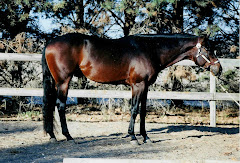Why? Daylight Saving Time allows us to use less energy in lighting our homes by taking advantage of the longer and later daylight hours.
Here is an informative article on how Daylight Savings Time got started:
It’s that time of year again. Get ready to trade an hour of sleep for an extra hour of sunshine later in the day. Welcome to daylight saving time!
At 2 a.m. on Sunday, March 11, it’s time to set your clocks ahead one hour to account for the beginning of daylight saving time (DST). That means clocks will "spring ahead" from 2 a.m. to 3 a.m. in an instant, causing everyone to lose one hour of precious beauty sleep.
So where did the concept of daylight saving time come from? Well it’s actually still fairly new in the United States.
Some credit Benjamin Franklin with coming up with the idea of Daylight Savings Time in 1784. When visiting Paris, he couldn't figure out why it was getting so sunny so early. He also thought that by adjusting the time, people would save on candle costs. However, DST was not implemented until 1916, when Germany and Britain used it as a way to conserve energy during World War I. The United States used it in 1918, but citizens were against the idea and it was abandoned.
DST came roaring back during World War II. From February 1942 until September 1945, the United States observed the policy year-round. However, it was abandoned again following the war after states and local governments couldn’t agree with when DST should be implemented.
Like a boxer who just won’t stay down, DST made a triumphant return in 1966 when Congress passed the Uniform Time Act which mandated that all states opting to observe DST move their clocks forward one hour on the last Sunday in April and one hour back on the last Sunday in October.
That law was amended in 1986 to start DST on the first Sunday in April. The end date remained the same as the last Sunday in October. This new system started in 1987.
Well the whole system changed again in 2005. The Energy Policy Act of 2005 extended daylight saving time in the United States another four weeks. Now DST begins on the second Sunday in March and ends on the first Sunday in November.
This was done in hopes of saving money on energy bills by making the day longer, earlier in the year. However, Congress retains the right to revert back to the 1986 law should the change prove unpopular or if energy savings are not significant enough.
So now you know why we “spring ahead” in March and “fall back” in November every year with our clocks.
Another fun fact is that the time change will precede the first day of spring and the vernal equinox this year, which is set to take place at 1:14 am on March 20th.
So remember, on Sunday, March 11, at 2 a.m., set those clocks ahead one hour. And then you have until Nov. 4 to adjust to the time change. Have fun!





No comments:
Post a Comment